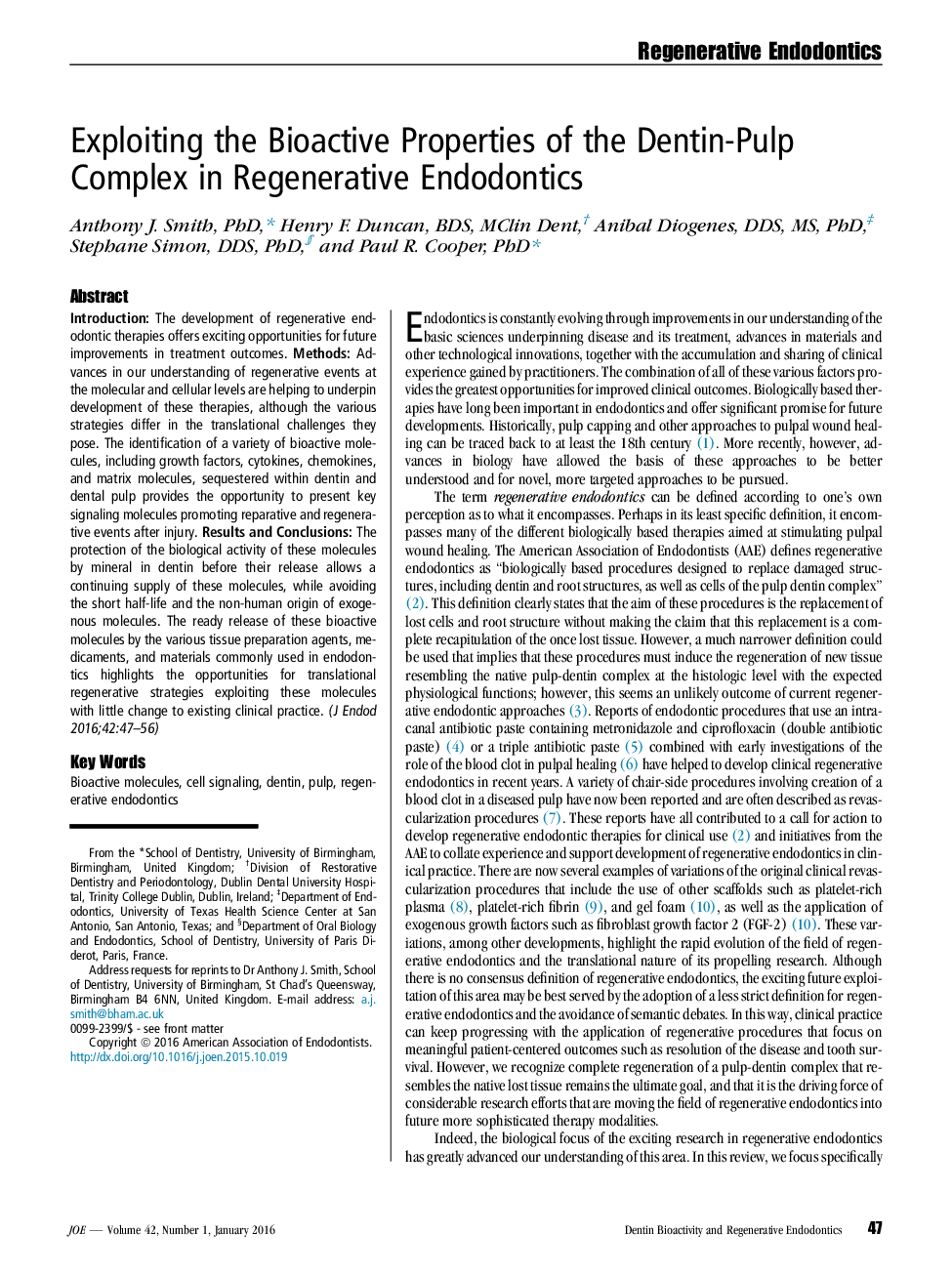| Article ID | Journal | Published Year | Pages | File Type |
|---|---|---|---|---|
| 3150135 | Journal of Endodontics | 2016 | 10 Pages |
•Identification of a broad range of bioactive signaling molecules sequestered in dentin.•Contributions of these bioactive molecules to regenerative events after injury.•Potential actions of endodontic irrigants/medicaments in releasing/exposing these bioactive molecules.•Regenerative endodontic opportunities with little change to current clinical practice.•Interplay between regenerative and inflammatory responses.
IntroductionThe development of regenerative endodontic therapies offers exciting opportunities for future improvements in treatment outcomes.MethodsAdvances in our understanding of regenerative events at the molecular and cellular levels are helping to underpin development of these therapies, although the various strategies differ in the translational challenges they pose. The identification of a variety of bioactive molecules, including growth factors, cytokines, chemokines, and matrix molecules, sequestered within dentin and dental pulp provides the opportunity to present key signaling molecules promoting reparative and regenerative events after injury.Results and ConclusionsThe protection of the biological activity of these molecules by mineral in dentin before their release allows a continuing supply of these molecules, while avoiding the short half-life and the non-human origin of exogenous molecules. The ready release of these bioactive molecules by the various tissue preparation agents, medicaments, and materials commonly used in endodontics highlights the opportunities for translational regenerative strategies exploiting these molecules with little change to existing clinical practice.
